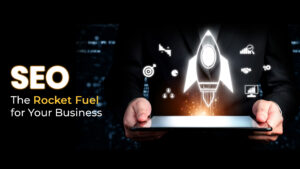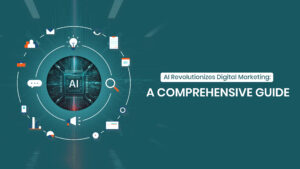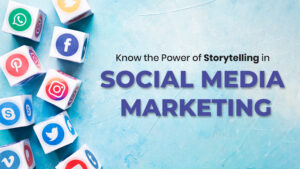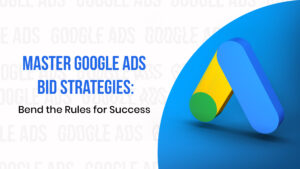As new technologies are developed, the field of digital marketing, like all others, continues to develop. To remain relevant to your audience, it’s important to stay up-to-date on advances. However, to properly appreciate contemporary tactics and strategies, it’s also important to comprehend the field’s past.
We’ll talk about how digital marketing has changed over time, what we think will happen to it in the future, and what we can learn from it.
Digital Marketing: What Is It?
Digital marketing is using digital technologies to promote and market products or services. It can reach a large audience through various means, including email, social media, search engines, and website advertising.
Digital marketing has become an essential part of modern marketing strategies because of the increasing usage of digital devices and the Internet. With more people using smartphones, tablets, and laptops to access the Internet, businesses need to have a strong digital presence. By using digital marketing techniques, companies can reach a larger audience more easily and effectively.
There are many different types of digital marketing:-
- Search engine optimization (SEO)
- Pay-per-click (PPC) advertising
- Social media marketing
- Email marketing
- Content marketing
- Affiliate marketing
- Marketing automation
- Content marketing
- Influencer marketing
Each type has its advantages and disadvantages, so it’s important to choose the right one for your business depending on your needs.
Digital marketing is constantly evolving as new technologies and platforms emerge. With the right strategy in place, your business can stay ahead of the curve and make the most of the latest digital marketing trends.
How Successful is Digital Marketing?
As digitization progressed, it was noted that fewer people were buying in person in the marketplaces, and today an increasing number of individuals are doing so for themselves and their families. Because you want to reach the correct audience, and that audience is online, there are several benefits to advertising your business online.
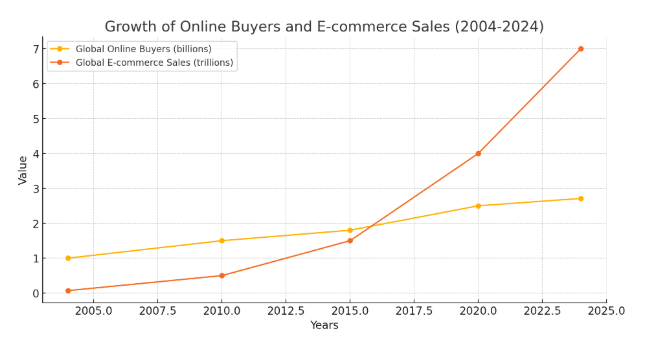
In 1998, Google started to exist. Yahoo introduced Yahoo web search, whereas Microsoft introduced the MSN search engine.
The field of digital marketing had its first significant upswing in 2006 when it was estimated that search engine traffic had increased to roughly $6.4 billion in only one month.
Due to the massive rise in information flow volumes—including the channels used by digital marketers—internet advertising and marketing in the US alone generated $2.9 billion in revenue by 2004.
Social networking websites soon started to appear. The first social networking website was MySpace, which was quickly followed by Facebook. Many businesses understood that the influx of brand-new websites was starting to create more options for selling their goods and brands.
It opened up new commercial opportunities and heralded the start of a new era for the industry. With additional resources, they required fresh ideas for brand promotion and social networking platform exploitation.
In the field of digital marketing, the cookie was another significant turning point. The original cookie’s purpose was to keep track of user behaviours. Over time, the cookie’s function has evolved, and modern cookies are programmed to give advertisers several options for gathering actual user data.
Customers may now access digitally advertised goods at any time. According to data gathered by the Marketingtechblog for 2014, social media posting is the most popular online activity in the US. The typical American uses social media for 37 minutes every day. 97% of digital marketers use Twitter, 69% use Pinterest, and 59% use Instagram. Facebook is used by 99% of them.
Twitter conducted a study revealing that 92% of surveyed individuals actively seek comments about brands on social media, and 68% reported their impression of a brand changed due to brand conversations. Facebook is the largest social media platform, making it a prime choice for B2C marketing.
The Mobile Era
Increased marketing and sales were seen in the second part of the decade, with Amazon’s e-commerce sales reaching $10 billion. With the advent of Whatsapp, Instagram, and Snapchat to the online community during the following several years, mobile app culture grew.
The State of Digital Marketing Right Now

Before the development of digital marketing techniques, firms only used offline methods. Billboards, TV and radio advertisements, newspapers, direct mail, phone calls, postcards, catalogues, brochures, and other print media were some of the channels that were used to advertise.
Ready to enhance your brand’s visibility with our comprehensive digital marketing services, event stall designs, brochure creations, and more? Contact us today at +91 87-3386-7700 to learn how we can help you stand out!
Some of these conventional marketing strategies are still successful today when so many businesses are vying for clients. For instance, older audiences of a brand could feel more at ease reading hard copies of newspapers than their digital equivalents. Radio advertising is still around.
The extent of their reach, however, is one of the key distinctions between the two kinds. Advertising on the radio or in the newspaper may be useful for reaching nearby consumers. But if you want to promote internationally, digital strategies are your best chance. They may also be more affordable than their conventional competitors.
Tweets, videos, podcasts, emails, blog posts, Pay-Per-Click (PPC) advertising, and other forms of digital marketing are all possible. Nearly 45% of the world’s population, or roughly 3.5 billion people, use social media, demonstrating the reach of digital marketing.
The Future of Digital Marketing is Much Larger
Analytics
Digital marketing analysis is often performed after the fact. Marketers will, for example, post a piece of content and then measure its effectiveness after a few weeks. This is beneficial, but real-time analytics is beginning to shake up the world of digital marketing.

The real-time analysis enables marketers to both individualize information for smaller segments of customers and respond to their performance much more swiftly.
Social Media Influencers
Influencer marketing has become a powerful strategy for advertisers across various industries, as brands increasingly collaborate with social media influencers to enhance their visibility and sales.
This approach has proven effective because consumers tend to trust recommendations from fellow users more than traditional advertisements from companies. As we move into 2023 and beyond, it is anticipated that more brands will leverage influencers to drive sales.
A notable shift is occurring in influencer marketing: consumers are growing weary of celebrity endorsements. Instead, there is a trend towards partnering with influencers who have a genuine connection to the products they promote. This shift emphasizes authenticity and relatability, which resonate better with audiences.
Some outstanding examples are
Prajakta Koli (MostlySane): A well-known content creator and comedian, Prajakta has successfully collaborated with various brands, leveraging her relatable content to engage her audience effectively.
Kusha Kapila: Known for her comedic sketches and relatable content, Kusha has partnered with numerous brands, showcasing products in a way that feels organic and authentic to her followers.

If you’re looking to elevate your brand’s presence through impactful influencer marketing strategies tailored to the Indian audience, contact us today.
Video Will Remain King
As digital marketers adapt to the Indian audience’s preferences, video content is poised to remain a dominant strategy in 2025. With 90% of Indian internet users consuming online video content regularly, this medium is crucial for connecting brands with consumers.
The rise of platforms like YouTube, and Instagram, has made video an essential part of digital marketing strategies.
Artificial Intelligence
Artificial intelligence (AI) allows digital marketers to better evaluate user data and tailor the client journey. AI enables businesses to learn a lot about their consumers and how to effectively target them.

AI also gives consumers a more personalized experience, offering tailored support at each stage of the purchasing process. Businesses may attain this level of customer service by automating adverts to specific audiences using programmatic advertising.
Augmented and Virtual Reality
Businesses will continue to use augmented reality (AR) and virtual reality (VR) in their marketing efforts to increase brand recognition and meet client demand. Companies such as Starbucks, Nivea, and Volkswagen have successfully implemented AR and VR campaigns to provide customers with an experience that ties them to their brands and goods.
Content to Become More Interactive
Although interactive content is not new, it is becoming more popular as an effective marketing tool than ever before. They not only extend the length of time a prospective consumer spends interacting with your business, but they also allow you to collect additional data and, as a result, fine-tune your digital marketing plan.
To broaden the scope of digital marketing, interactive content might include contests (for example, “comment on this article and share it to your timeline to participate”), polls, surveys, or even games. Giving people new ways to connect with your business contributes to the overall objective of increased customization.
Bottom Line
Finally, this demonstrates how digital marketing has grown over the past year. Still, history indicates that as soon as the social media frenzy began and Google established a stranglehold in the digital ads arena, the need for digital marketing skyrocketed.
It appeared that the new revolution would leave traditional marketing in the dust. But, in response to the question, “Is digital marketing an evolution or a revolution?” ‘is inside you. Your conscience is the only one who can answer the question.


